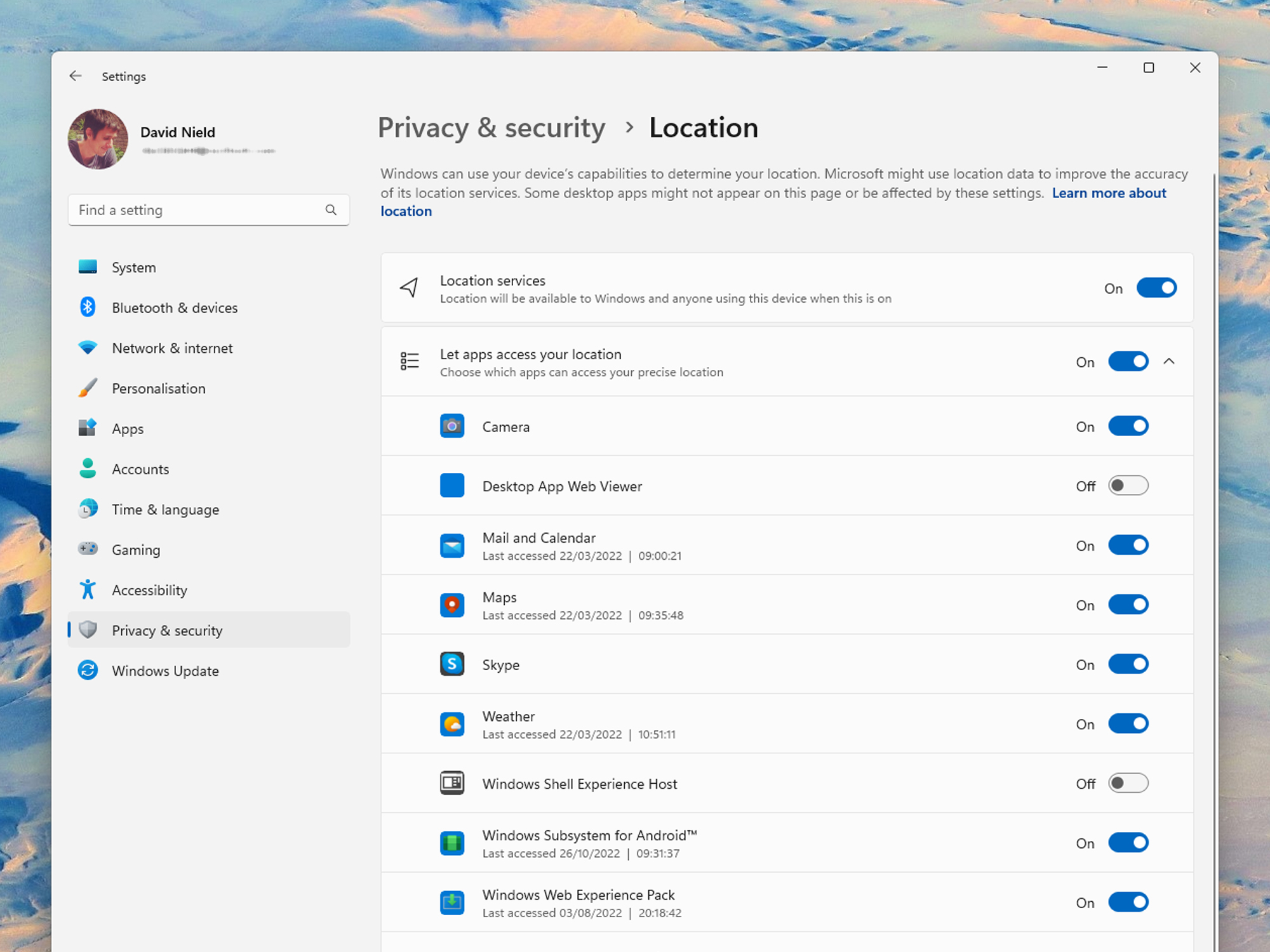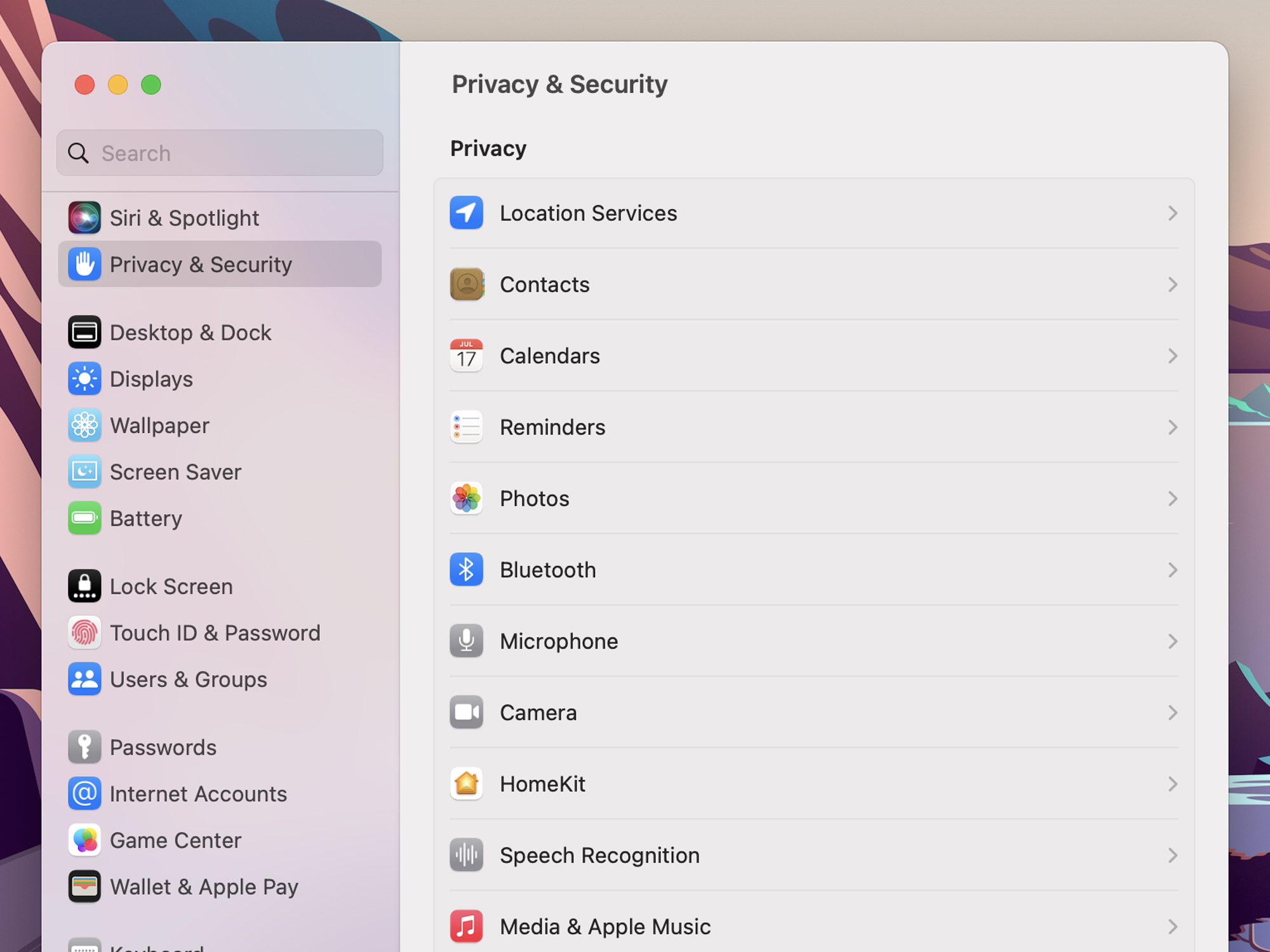

You might already be familiar with mobile apps asking for permissions—usually to use your phone’s microphone, camera, or location—and there are similar settings for the programs you use on Windows and macOS.
This means you can make sure your computer’s applications are behaving well, and not accessing information you’re not comfortable giving away. Most of the time, these permission requests are legitimate, like when an email client asks to see your contacts when you send a message, but it’s important to keep on top of them.
If there are apps you feel are going too far, you can revoke some of their permissions or uninstall them entirely. These processes are straightforward on both Windows and macOS, as the permission controls are prominently featured within the main settings hubs.
How to change app permissions on Windows

Open up Settings from the Start menu, then choose Privacy & security. You’ll see a list of app permissions, including Location, Camera, and Microphone, and you can click on any of these entries to check which apps have access to these tools. With some permissions, you’ll see a master switch that lets you turn access on or off for all the programs on your system.
If you see a program on the list you think shouldn’t have access to the permission you’ve selected, use the toggle switch to its right to disable it. There’s also a Recent activity option farther down the screen for each permission, showing which applications have recently made use of their privileges—it’s another signal you can use to work out whether an app has a genuine need for a particular permission.
[Related: The fastest way to install Windows software]
While figuring out which programs should have access to which permissions, common sense is usually your best guide. Webcam tools will need camera access, for example. If you’re not sure, you can refer to Microsoft’s detailed list of what each permission entails, or run a quick web search for a particular permission. You can also contact software developers directly if you’re unsure about why an app needs certain permissions.
If one of your programs is accessing permissions in a way you’re not happy with, you can uninstall it. From the main Settings pane, select Apps, followed by Installed apps. Click on the three dots to the right of a particular application, then choose Uninstall and follow the instructions on the screen to remove the software.
How to change app permissions on macOS

On macOS, open the Apple menu and choose System Settings, then pick Privacy & Security. A list of program permissions will appear on screen, including Location Services and Developer Tools, showing which applications have access to which bits of system information. Click on any permission to see the apps that have access to it.
[Related: Fix a slow Mac computer with these four hidden tweaks]
To revoke a permission for a particular app, use the toggle switch to the right of the app’s name. Note that some permissions have more detailed settings than others. In Files and Folders, for example, you can give certain applications access to some folders on the disk but not others. The options you see will vary depending on the permission you’re looking at and how app developers are using it.
Unfortunately, this settings screen doesn’t provide much information about why an app might be asking to use a certain permission. However, you may have been given some kind of explanation when it first requested access. Most permissions should make sense (like calendar access for schedule managers), but if you’re ever in doubt, it’s best to play it safe. If you want more information about why an app is accessing a certain permission, you can always contact software developers directly.
Should you come across an application that’s using permissions in ways you’re not comfortable with, you can, of course, remove it from the system. In Finder, click Applications on the left (or choose Go and Applications), then drag the program icon down to the trash can icon in the macOS dock.
